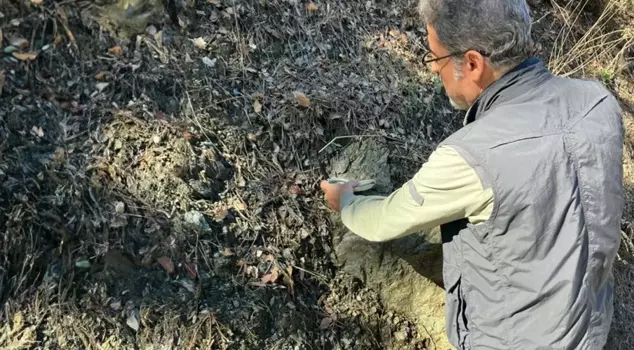
01.11.2025 14:58
After the 6.1 magnitude tremor, Prof. Dr. Hasan Sözbilir, who conducted investigations in the Sındırgı district of Balıkesir, where a series of earthquakes occurred, pointed out that new earthquakes of the same magnitude could happen. Sözbilir noted that new faults have been identified in the region and warned, "These buildings could collapse as there may be earthquakes reaching a magnitude of at least 5 in the future."
On October 27, a 6.1 magnitude earthquake occurred in the Sındırgı district of Balıkesir. Another earthquake of the same magnitude was recorded in the same region on August 10. The second tremor was felt in İzmir, Istanbul, Bursa, and surrounding provinces. Some buildings collapsed in both earthquakes, and many structures were damaged. Prof. Dr. Hasan Sözbilir, the Director of the DEU Earthquake Research and Application Center, conducted investigations in the region with his teams.
"WE HAVE DETECTED FAULTS THAT HAVE NOT MOVED FOR 10,000 YEARS"
Providing information about the field studies, Prof. Dr. Sözbilir stated, "We have detected the presence of faults that have not moved before in the mountainous area south of Sındırgı. These faults were active millions of years ago but have not moved in the last 10,000 years. They were considered 'dead faults' within the system. Now we have observed that these faults are producing earthquakes. There are different fault segments extending from west to east. Each is 10-15 kilometers long, and some can extend up to 45 kilometers when they merge," he said.
"THERE ARE SEGMENTS THAT CAN PRODUCE INDEPENDENT EARTHQUAKES"
Indicating that the two major earthquakes in Sındırgı occurred within the same fault zone, Prof. Dr. Sözbilir said, "Within this zone, there are segments that can produce independent earthquakes. First, the fault in the west broke, and 2.5-3 months later, another fault 15 kilometers to the east broke. There are also faults continuing eastward within the same system. Similar magnitude earthquakes may develop in the near future," he added.
"NEW FAULTS ARE PROGRESSING IN A STEP-LIKE FORMATION"
Prof. Dr. Sözbilir also noted that the newly detected faults south of the Sındırgı fault, located at the westernmost part of the Simav fault zone, are arranged in a step-like formation from the mountainous area to the plain, stating, "These faults extend gradually from a height of 750 meters to 250 meters. We have identified five different step structures with an elevation difference of 400-500 meters between them," he explained.
"EARTHQUAKES MAY CONTINUE FOR A FEW MORE MONTHS"
Expressing that the geothermal system in the region is also influential, Prof. Dr. Sözbilir said, "There are hot water sources in the Emendere region, and a fault passes beneath this line. When the geothermal system and an active fault are found in the same place, earthquake activity does not stop immediately. Therefore, it may continue in the form of an earthquake storm. Earthquakes of similar magnitudes may continue for a few more months," he stated.
"EARTHQUAKES UP TO 5 IN MAGNITUDE MAY OCCUR, BUILDINGS MAY COLLAPSE"
Warning about damaged structures, Prof. Dr. Sözbilir said, "Immediate measures should be taken regarding the building stock in Sındırgı. The buildings that collapsed and were heavily damaged in the first earthquake were evacuated. This prevented loss of life in the second earthquake. In the last earthquake, medium and heavily damaged buildings were created. It is beneficial to evacuate these buildings. Since earthquakes of at least 5 in magnitude may occur in the future, these buildings may collapse. Our citizens should avoid being near or inside such buildings," he concluded.